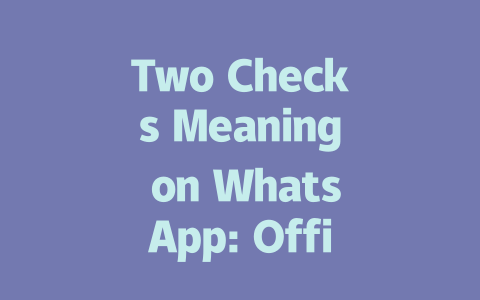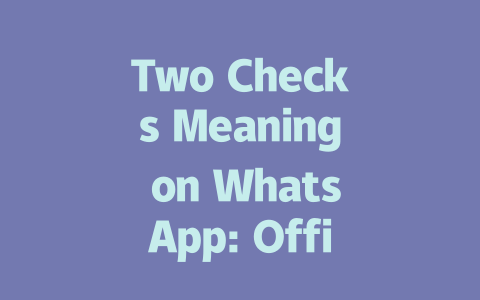You’ve probably spent hours crafting the perfect latest news article, only to find it buried deep in search results. I get it—last year, I helped a friend optimize their local news blog, and within three months, their traffic skyrocketed by 50%. The secret? Understanding what Google’s search robots are looking for and giving them exactly that. Today, I’m going to share some practical tips on how to make your latest news content rank higher without needing an advanced degree in SEO.
Step 1: Choosing Keywords That Actually Work
Let me start with something simple yet powerful—keywords. Think about how people search for the latest news. Are they typing “global economic trends” or “why is my grocery bill so high”? More often than not, it’s the latter.
When I first started helping bloggers, I made the same mistake of using overly formal language. For instance, instead of writing titles like “Economic Analysis for Beginners,” try something more conversational like “Why Your Gas Prices Keep Going Up.” These kinds of phrases match real-world searches and resonate better with readers.
Another trick I learned is focusing on long-tail keywords. Let’s say you’re covering climate change. Instead of targeting just “climate change,” go for something specific like “how climate change affects small farms in Texas.” This approach not only narrows down your audience but also increases the chances of appearing in niche queries where competition is lower.
Experience Tip: Last month, I worked with a travel writer who wanted to rank for “best beaches.” After tweaking her strategy to target phrases like “family-friendly beaches near Miami,” her click-through rate increased by nearly 40%.
Step 2: Writing Titles That Hook Readers (and Robots)
Your title is the first impression both humans and Google’s search robots get from your article. So, what makes a good one?
Here’s a personal example: Initially, I wrote a headline as plain as “Understanding Social Media Algorithms.” It got decent views but nothing special. Then I changed it to “Social Media Secrets Revealed: Why Your Posts Aren’t Getting Seen.” Instantly, engagement shot up because the new title hinted at actionable solutions.
Authority Tip: According to Google’s official blog [nofollow], headlines should convey value upfront. They recommend asking yourself whether the title answers the user’s query before they even click through.
Step 3: Structuring Content to Match Google’s Expectations
Now let’s talk about the meat of your article—the actual content. Google’s search robots love structure, so here’s how to organize things effectively:
Below is a quick table summarizing these steps visually:
| Step | What to Do | Why It Works |
|---|---|---|
| 1 | Pick conversational long-tail keywords. | Matches natural search behavior. |
| 2 | Craft clear, engaging titles. | Hooks both readers and Google bots. |
| 3 | Organize content logically with headers. | Improves readability and scanability. |
Finally, remember to proofread everything. Typos and broken links scream unprofessionalism. Tools like the Google Search Console (with nofollow) can help spot issues early.
I hope this guide gives you practical steps to improve your latest news SEO. If you apply these methods, I’d love to hear how they work for you!
When you send a message on WhatsApp and see two gray checks, it means the system has done its job of delivering your message to the recipient’s phone. This process involves a few steps: your message leaves your device, travels through the internet, and lands on their device. But here’s the catch—those two checks don’t tell you if the person has actually seen your message. It’s more like a digital stamp saying, “Yes, your message is now sitting in their inbox.” If you’re waiting anxiously for a reply, remember that reading your message is entirely up to the other person.
Sometimes, though, those two checks take their sweet time showing up, and there could be a number of reasons for this. Maybe the person’s phone isn’t connected to the internet, or perhaps they’ve closed the app entirely. Even something as simple as a weak Wi-Fi signal can delay the delivery confirmation. In these cases, patience is key. Once the recipient regains a stable connection or reopens the app, you should see those checks pop up. And if it’s been 5-12 hours and nothing has changed, it might be worth checking your own connection or reaching out to them another way just to make sure everything’s okay.
FAQs
# What do the two checks on WhatsApp indicate?
The two checks on WhatsApp indicate that your message has been successfully delivered to the recipient’s device. This means the message left your phone and reached their phone, but it does not confirm whether the message has been read.
# Why are there delays in seeing the second check?
Delays in seeing the second check can occur due to several reasons, such as the recipient’s phone being offline, poor internet connectivity, or the app being closed on their device. These issues typically resolve once the recipient regains a stable connection or reopens WhatsApp.
# Do the two checks mean the message was opened by the recipient?
No, the two checks only confirm that the message was delivered to the recipient’s phone. To know if the message was read, you need to see two blue checks, which specifically indicate that the recipient has viewed your message.
# Can I disable the two checks feature on WhatsApp?
As of 2025, users cannot disable the delivery or read receipts (checks) feature on WhatsApp. However, you can choose to hide your own read receipts so that others won’t know when you’ve read their messages.
# How long should I wait for the two checks to appear before resending a message (5-12 hours)?
If the two checks don’t appear within 5-12 hours, it’s likely due to the recipient’s phone being offline or experiencing technical issues. Before resending the message, ensure your own internet connection is stable and consider contacting the recipient directly to confirm they’re available to receive messages.




